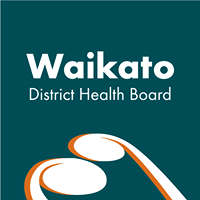New High Dependency Unit opens
The new 12-bed High Dependency Unit -- which opened today (Wednesday) at Waikato Hospital -- offers the latest in medical technology.
And it’s been a team effort to bring the project together, with the nurses also having a big input. “The reason why this space feels so open and user-friendly is because of the high input by nurses,’’ said project manager Lynnette Jones, who was also a charge nurse manager in the old High Dependency Unit downstairs.
She has been involved in the project – the latest part of the Meade Clinical Centre to open – since its inception and yesterday was delighted to see everything coming together ahead of a 10am patient shift to the Level 4 unit today (Wednesday).
The unit bristles with the latest in medical technology but Lynnette says it’s the little things that will make a huge difference to patients and staff.
“The devil is in the details. It’s the little things that all come together that make this work so well.’’
Lynnette could point to a dozen or more new features which are a vast improvement on the old High Dependency Unit which has been next to the Intensive Care Unit on level 3 of the Menzies Building. ICU will move alongside HDU next April to complete the $12 million redevelopment of both to become known as Critical Care.
The new HDU has two isolation rooms, one complete with a negative air flow and anteroom which sees its air expelled outside rather than into the unit. This is to combat airborne diseases like TB.
There are dialysis taps at all bed stations – vital for renal failure situations and patients won’t have to be juggled about, as they were in the past, to access taps.
Each bed station has a large and versatile central medical services pendant packed with gear including medical gasses, suction, monitor and power for all sorts of other equipment – doing away with items fixed to the walls.
The new equipment trolleys mean nurses are never far from what they need, and the bed spaces are roomier. Modern infection control standards see blinds on the huge windows installed between the double glazing.
There’s a central glassed-in staff station leading to high patient visibility at all times. The staff ratio is one to two patients.
“The good thing about this unit is we have greater flexibility for patients. Those two side rooms give us options to provide quieter spaces,’’ Lynnette said.
Clinical director Rob Frengley had a big say in the unit design and set-up, along with campus redevelopment facilitator Kathy Barnes, critical care charge nurse manager Niki Houghton and critical care nurse manager Colleen Hartley.
What’s been created is a far cry from the old Menzies Building set-up. One of the biggest challenges has been the tight timeframes with the HDU project moved forward. “But all the teams have worked well together to get HDU here,’’ Lynnette said.
“We all feel the patients were always in very good hands but now they will have the same good hands but with better technologies.’’
Chief operating officer Jan Adams is also one of the new unit’s fans. “I'm delighted that the High Dependency Unit will be moving into a state-of-the-art facility and am sure that staff, patients and relatives will appreciate the new environment.
“It's light, airy and spacious and well equipped with state-of-the-art technology. This is a further exciting phase of our building/redevelopment project and I look forward to ICU moving to its new location alongside HDU, next year.
“My thanks go to everyone involved who has made today’s opening a reality,’’ she said.
ENDS
About Waikato District Health
Board and Health Waikato:
Waikato DHB is responsible for
planning, funding and providing quality health and
disability support services for the 372,865 people living in
the Waikato DHB region. It has an annual turnover of $1.2
billion and employs more than 6000 people.
Health Waikato is the DHB’s
main provider of hospital and health services with an annual
budget of more than $701 million and 5238 staff. It has six
groups across five hospital sites, three primary birthing
units, two continuing care facilities and 20 community bases
offering a comprehensive range of primary, secondary and
tertiary health services.
A wide range of independent providers deliver other Waikato DHB-funded health services - including primary health, pharmacies and community laboratories.



 GfK Radio: Radio Listening Tops 3.5M Weekly Listeners
GfK Radio: Radio Listening Tops 3.5M Weekly Listeners  Jacob Douglas Motorsport: Douglas Heads To The Oval After Breakthrough Victory
Jacob Douglas Motorsport: Douglas Heads To The Oval After Breakthrough Victory Research For Maori Health and Development: Bridging The Gap In HIV Prevention For Māori - Insights And Resources Now Available
Research For Maori Health and Development: Bridging The Gap In HIV Prevention For Māori - Insights And Resources Now Available Tertiary Education Union: Weltec And Whitireia Cuts A Shocking Blow For Their Communities
Tertiary Education Union: Weltec And Whitireia Cuts A Shocking Blow For Their Communities PHARMAC: Pharmac Proposes To Fully Fund Nutrition Replacements For Some People With Crohn’s Disease
PHARMAC: Pharmac Proposes To Fully Fund Nutrition Replacements For Some People With Crohn’s Disease Nōku Te Ao: Bringing Together Voices On Mental Distress, Stigma And Discrimination Under One Roof
Nōku Te Ao: Bringing Together Voices On Mental Distress, Stigma And Discrimination Under One Roof